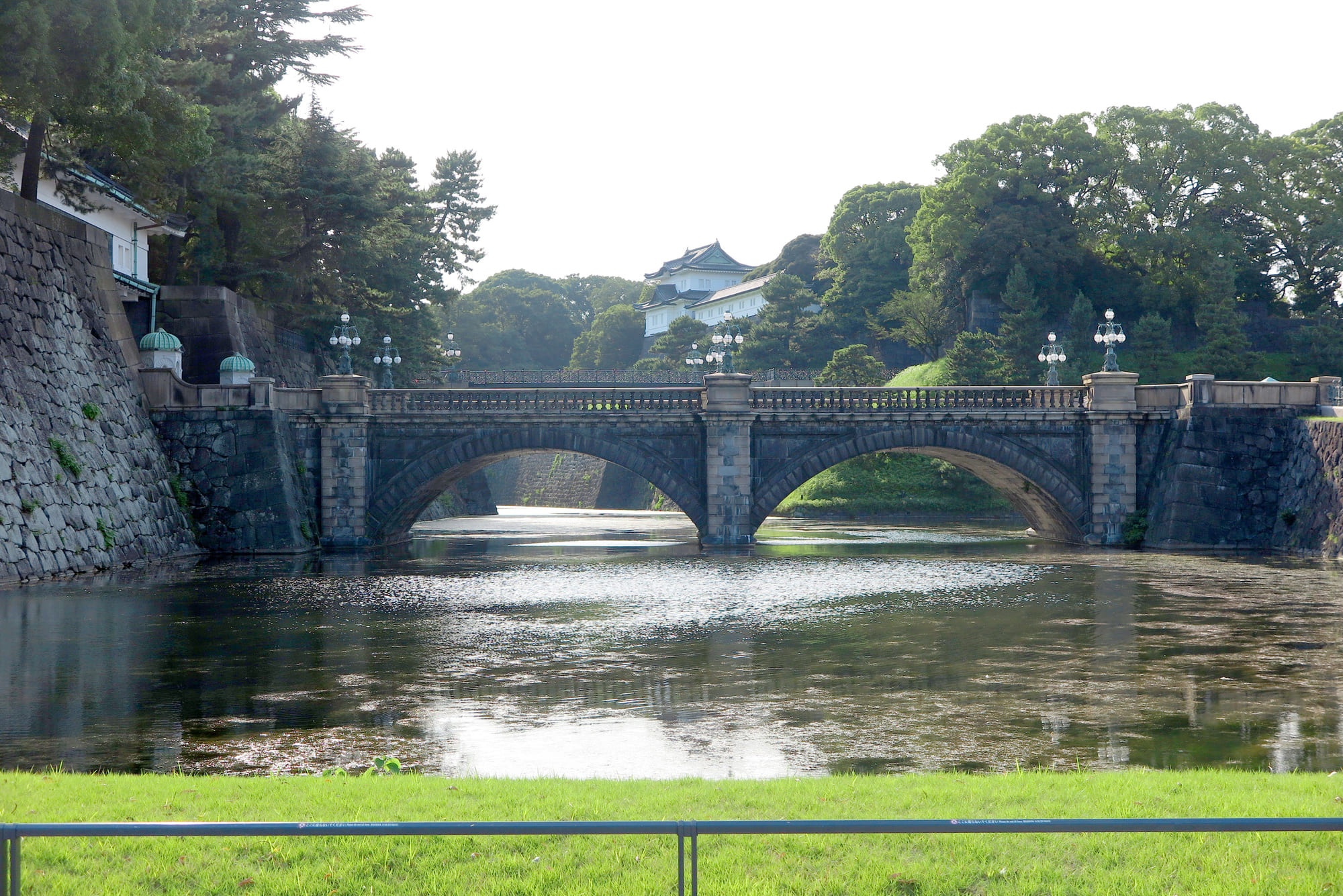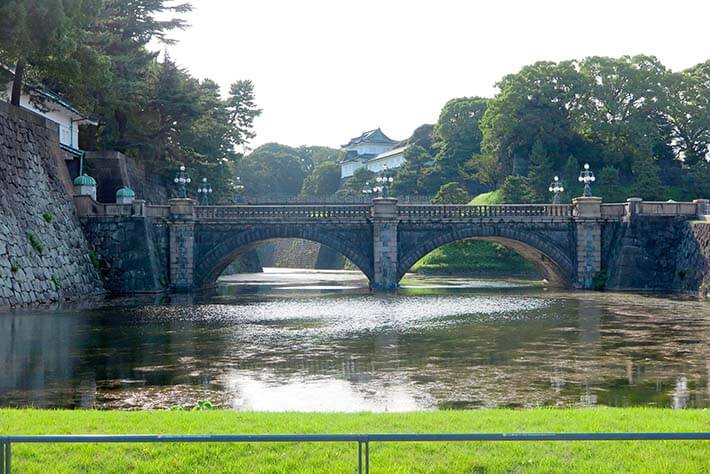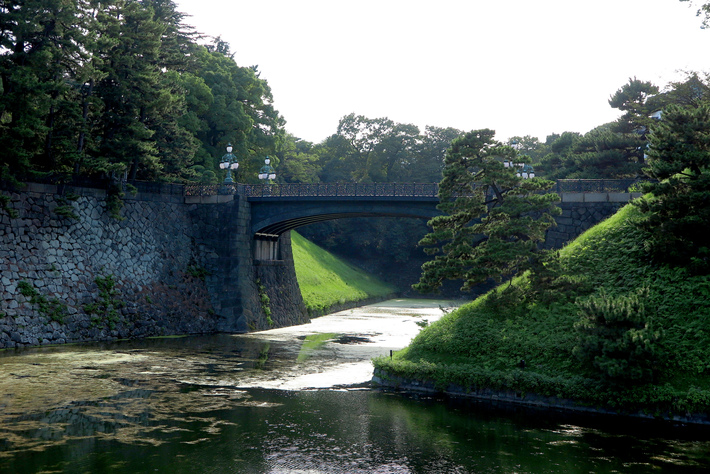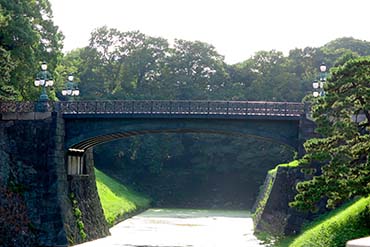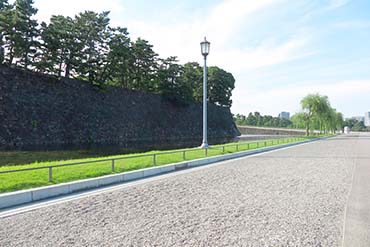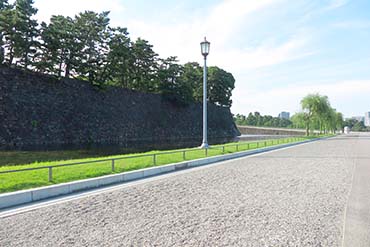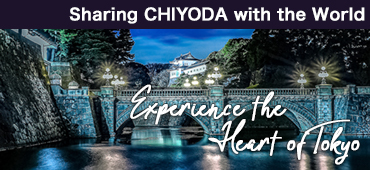Imperial Palace・ Tokyo Sta.・ Hibiya Nijubashi Bridge
INFORMATION
- address1-1 Kokyogaien, Chiyoda-ku, Tokyo
- tel03-3213-0095
- access2-minute walk from Subway "Sakuradamon Sta."
3-minute walk from Subway "Hibiya Sta."
3-minute walk from Subway "Nijubashimae <Marunouchi> Sta."
| WEBSITE | https://www.env.go.jp/garden/kokyogaien/index.html |
The Nijubashi Bridge is located in front of the Imperial Palace main gate. If you participate in the visit of the general public to the Imperial Palace, you can cross the Nijubashi Bridge.

A mere 2-minute walk from Tokyo Metro Sakuradamon Station and a 3-minute walk from Hibiya Station and Nijubashi
There are two bridges in front of the Imperial Palace main gate, the iron bridge that can be seen in the background from the plaza, called the "Seimon-tetsubashi Bridge," and the stone bridge in the foreground, which is called the "Seimon-ishibashi Bridge." Some people mistakenly believe "Nijubashi" to be the general name for both bridges, but "Nijubashi" officially refers to the Seimon-tetsubashi Bridge.
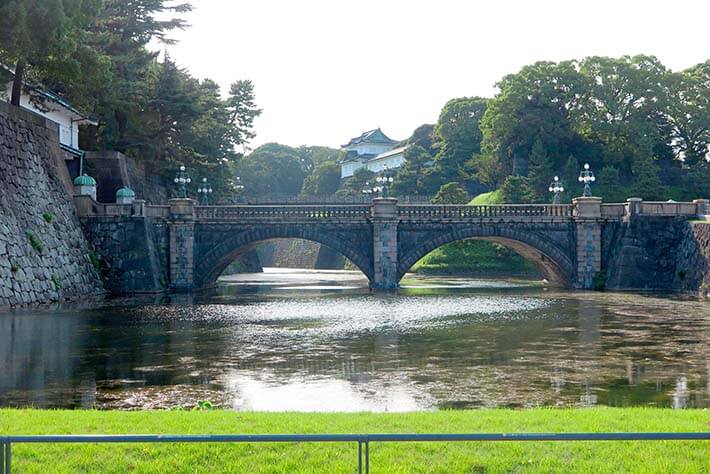
The Seimon-ishibashi Bridge in the foreground is made of granite and was designed in a Western architecture style. These two bridges are used for official events such as the general congratulatory visit by the public on New Year's, and for visits by foreign guests, but it is usually closed to the public. However, if you participate in the visit of the general public to the Imperial Palace, which is held once in the morning and once in the afternoon from Tuesday to Saturday excluding holidays, in addition to the Nijubashi Bridge you can also see other areas such as the Fujimi-yagura (Mt. Fuji-view keep) inside the palace and the exterior of the palace.
There are many different spots in Kokyo Gaien National Garden where Nijubashi Bridge is located, such as the Sakurada-mon Gate, the statue of KUSUNOKI Masashige, and the Wadakura Fountain Park. You should definitely make a visit to the Nijubashi Bridge at Kokyo Gaien National Garden, which has a lot of attractions.

